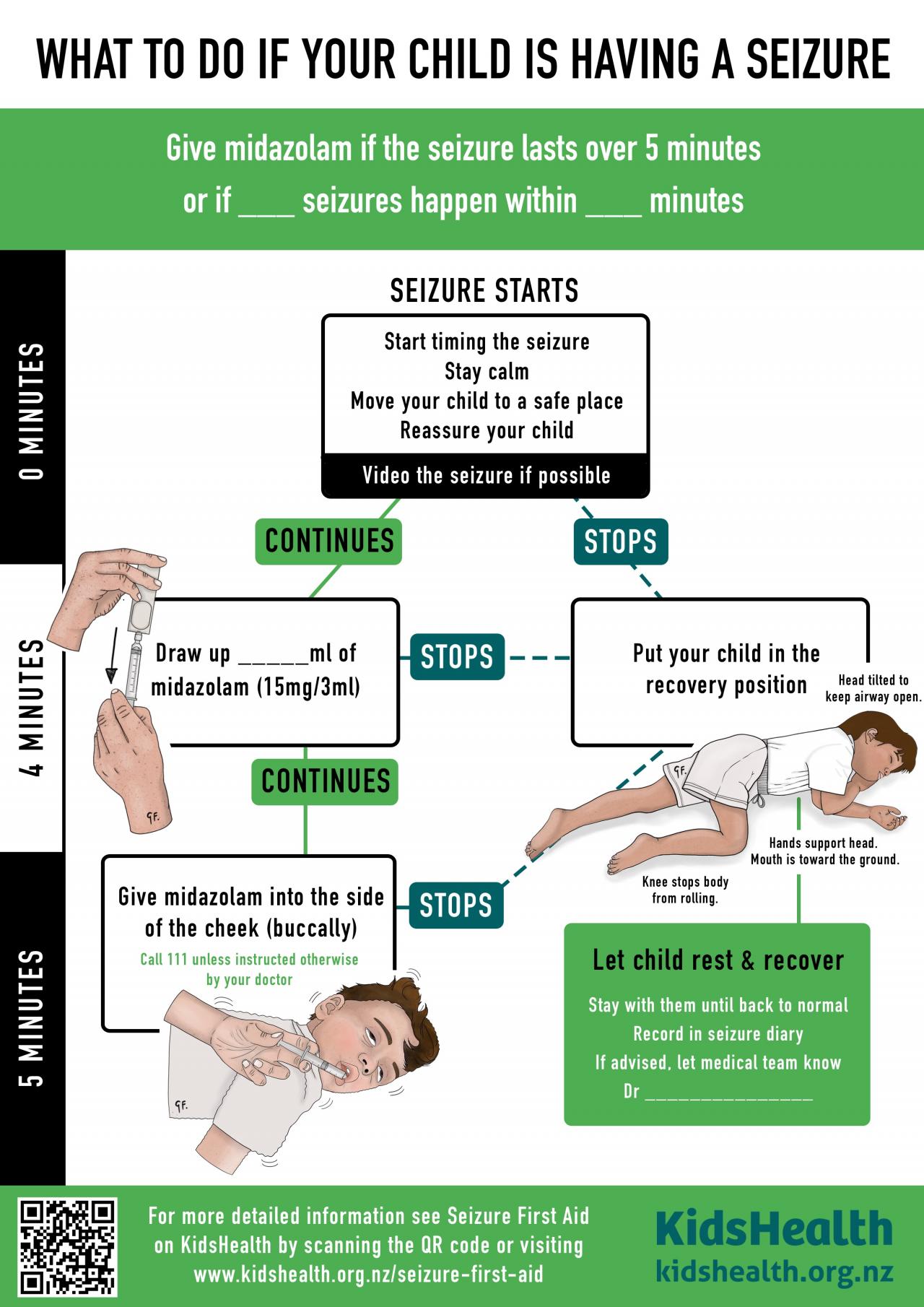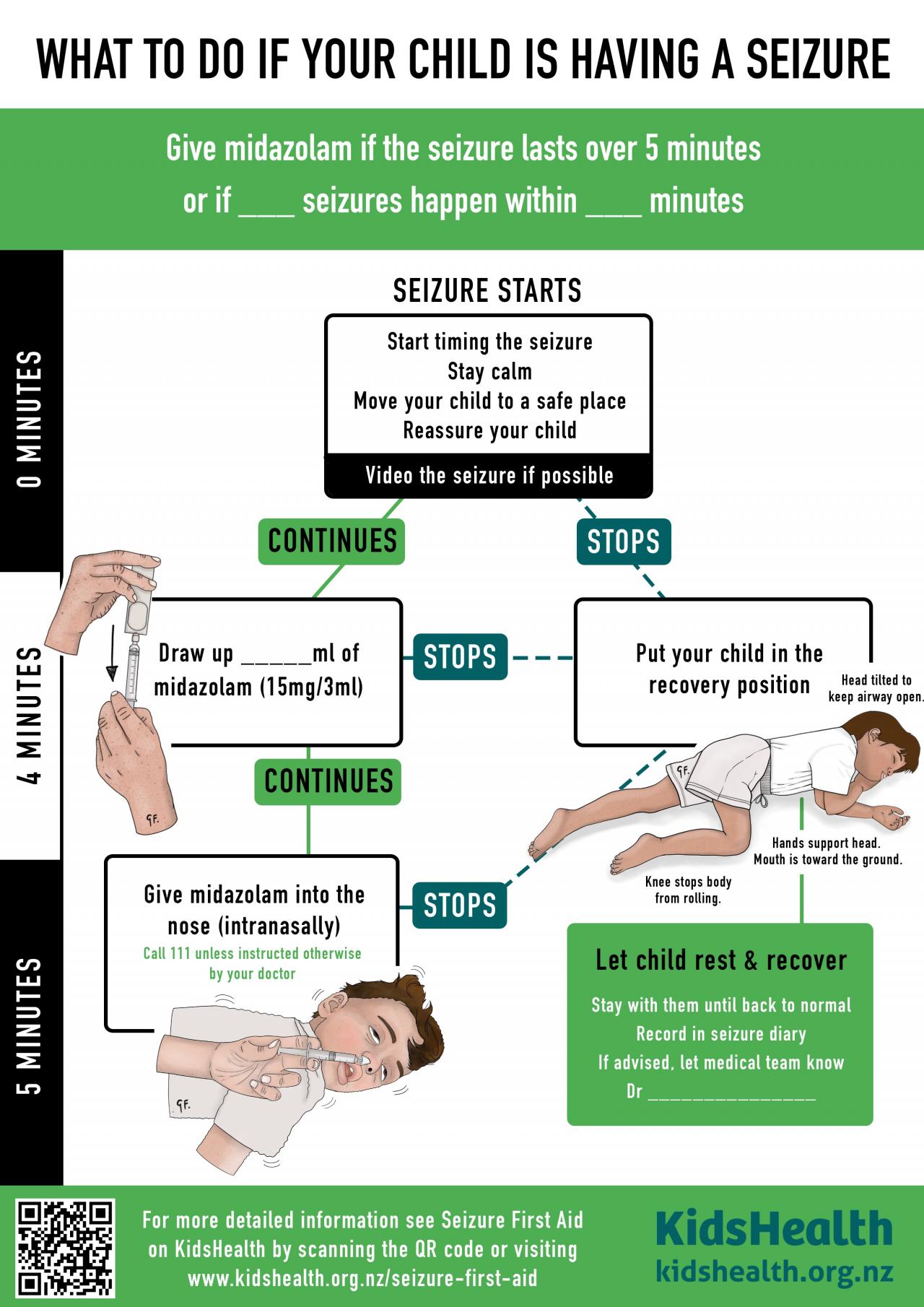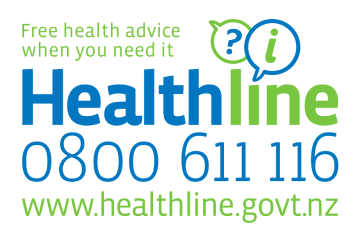Emergency Epileptic Seizure Medicine
Emergency Epileptic Seizure Medicine
Emergency epileptic seizure medicine is used to stop seizures lasting longer than 5 minutes. Emergency epileptic seizure medicine is also known as seizure rescue medicine. Learn more about emergency epileptic seizure medicine below.
Key points about emergency epileptic seizure medicine
- parents, caregivers or teachers can give emergency epileptic seizure medicine at home or school
- emergency epileptic seizure medicine is used to stop seizures lasting longer than 5 minutes
- there are different types of emergency epileptic seizure medicine
- midazolam is the most common emergency epileptic seizure medicine
- you give midazolam either in between the cheek and teeth (buccal) or in the nose (intranasal)
- tamariki (children) who have had an epileptic seizure that has lasted longer than 5 minutes should get emergency epileptic seizure medicine from their doctor
Why do you need to stop epileptic seizures?
Most epileptic seizures will stop on their own within a few minutes. Rarely, a seizure may last longer. When this happens, it can be harder to stop them.
Epileptic seizures that last longer than 30 minutes can injure the brain. For this reason, emergency epileptic seizure medicine should be used by caregivers if their child has an epileptic seizure that lasts longer than 5 minutes.
Seizures that involve jerking of both sides of the body are more likely to cause damage to the brain if they last longer than 30 minutes.
This includes the following seizure types:
- generalised clonic, tonic and tonic-clonic seizures
- focal to bilateral tonic-clonic seizures
See the KidsHealth page to learn more about different types of epileptic seizures in children
How can emergency epileptic seizure medicines stop seizures?
There are several emergency epileptic seizure medicines. They are often called seizure rescue medicines.
These medicines suppress and stop the abnormal electrical activity that happens in the brain during a seizure. Parents and caregivers can give some of these medicines at home.
Who should have a supply of seizure rescue medicine?
Tamariki who have had a seizure longer than 5 minutes
Most tamariki who have had an epileptic seizure that lasted longer than 5 minutes should have a supply of seizure rescue medicine.
Some types of seizures can go on for a long time with no negative effect on the brain. This includes focal impaired awareness seizures and absence seizures, where tamariki just have altered awareness. For these seizure types, tamariki may only need emergency epileptic medicine if their seizure lasts longer than 10 or even 15 minutes.
Tamariki who have had multiple shorter seizures
When a child has multiple short seizures over a brief time period this is called a cluster of seizures or clustering.
Tamariki who have had clusters of short seizures (less than 5 minutes) over a brief time period (for example, less than 30 minutes) should have a supply of seizure rescue medicine.
A health professional will give you clear instructions for when to give seizure rescue medicine. The instructions will be on the medicine packet and in your child’s seizure plan. The health professional will teach you and your whānau (family) how to give the medicine.
What are the different types of seizure rescue medicine?
The main type of seizure rescue medicine for home use in New Zealand is midazolam. But some tamariki may get diazepam instead.
You give midazolam either in between the cheek and teeth (buccal) or in the nose (intranasal). Buccal midazolam is more common. For tamariki who vomit or produce a lot of saliva during their seizures, the doctor may prescribe intranasal midazolam.
You give diazepam into the bottom (rectal).
See the KidsHealth page on midazolam to learn more about this seizure rescue medicine
See the KidsHealth page on diazepam to learn more about this seizure rescue medicine
When do I give seizure rescue medicine?
A health professional will give you instructions for when to give seizure rescue medicine.
A parent or caregiver usually gives seizure rescue medicine when their child has:
- a seizure lasting longer than 5 minutes
- multiple short seizures in a brief period of time
Sometimes, your health professional may give different instructions. They may also give you a seizure plan showing you when to give seizure rescue medicine. It will also tell you how much to give.
How do I get a supply of seizure rescue medicine?
A doctor will give you a prescription for seizure rescue medicine. Take the prescription to your local pharmacy.
If your child has a prescription for midazolam, you will also need syringes for giving the medicine. You can get these syringes from your local pharmacy, hospital or GP practice.
If you need more medicine, you can get a prescription from your GP practice.
What if I accidentally give too much seizure rescue medicine?
Dial 111 for an ambulance.
Can I give another dose of the seizure rescue medicine?
Only one dose for each seizure
Don’t give your child more than one dose of rescue medicine for each seizure. (Only give more than one dose if your doctor has told you to do this.)
Dial 111 for another seizure within 1 hour
If your child has another seizure within 1 hour of the first seizure stopping - dial 111 for an ambulance as soon as it starts.
Another dose for another seizure longer than 5 minutes, 1 hour after the first
If your child has another seizure 1 hour after the first seizure has stopped, and that seizure is longer than 5 minutes, you can give another dose. And dial 111 for an ambulance.
No more than 2 doses in 24 hours
Don’t give more than 2 doses in 24 hours without talking to a doctor.
Are there any side effects of seizure rescue medicine?
Tamariki will often be confused and drowsy after a seizure. They may be more confused and drowsy after having seizure rescue medicine.
After seizure rescue medicine, some tamariki may:
- get a headache
- feel sick (or vomit)
- cough
- get the hiccups
A very small number of tamariki may become agitated or aggressive after seizure rescue medicine. This will improve over a few hours.
Rarely, in some tamariki, the medicine may cause decreased breathing. If your child is not breathing normally or they look blue around the mouth, dial 111 for an ambulance.
What should I do after my child’s seizure has stopped?
If your child is not already in the recovery position, put them in it.
Stay with your child. When they are able, move them to a calm and quiet space until they are back to normal.
Record the seizure in your seizure diary.
If your child has a seizure while taking a daily antiseizure medicine, let a health professional know.
If your child is not on daily antiseizure medicine to prevent seizures, make an appointment with your GP. Discuss starting a daily antiseizure medicine to decrease the chance that your child will have another seizure.
Emergency epileptic seizure medicine – more content and resources
Midazolam content and resources
Midazolam - emergency epileptic seizure medicine.
Printable emergency plan for giving buccal midazolam for a seizure.

Printable emergency plan for giving intranasal midazolam for a seizure.

Diazepam content and resources
Diazepam - emergency epileptic seizure medicine.
Printable emergency plan for giving rectal diazepam for a seizure.

This page last reviewed 28 June 2024.
Do you have any feedback for KidsHealth?
If you have any feedback about the KidsHealth website, or have a suggestion for new content, please get in touch with us.
Email us now